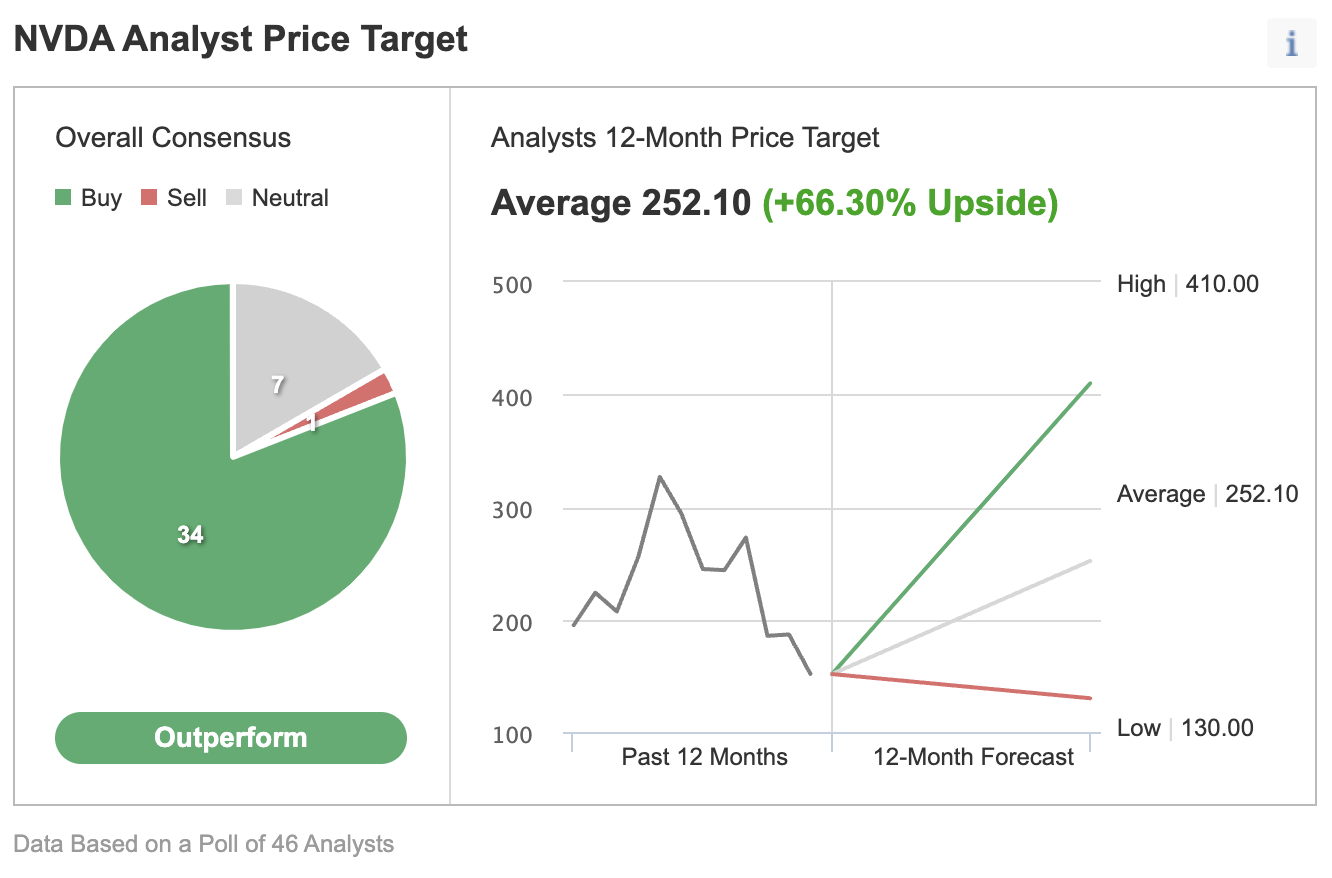- Sharp slide in NVIDIA’s stock shows investors are already pricing in recession
- The chip industry is closely tied to economic cycles
- NVDA serves cloud computing and artificial intelligence, which are more resilient
-
If you’re interested in upgrading your search for new investing ideas, check out InvestingPro+
- Any company’s financials for the last 10 years
- Financial health scores for profitability, growth, and more
- A fair value calculated from dozens of financial models
- Quick comparison to the company’s peers
- Fundamental and performance charts
NVIDIA's (NASDAQ:NVDA) spectacular fall from grace indicates that investors may already be pricing in a global recession. This year, the Santa Clara, California-based company has lost about 48% of its market value.
Among technology companies, chipmakers are some of the most vulnerable to the economy’s cycles, as they rely on demand from industries, such as cars, computers, and factory equipment.
The post-COVID global reopening has seen the sector enjoy over 20% increase in monthly sales for almost a year now.
However, as the US Federal Reserve embarks on one of the most aggressive monetary tightenings in the country’s history, those demand-supply dynamics could quickly reverse—especially if the economy dives into a recession.
NVIDIA’s broad-based selloff also has another factor. Last month, it said it expects that sanctions in Russia and ongoing COVID lockdowns in China will result in a $500 million hit in the current quarter.
But despite this widely anticipated downturn, some analysts are not yet convinced that market leaders, like NVIDIA, will be hurt as badly as the slump in their stock prices shows.
Most Resilient
Bank of America, in a note this month, named NVIDIA a top pick after its valuation became more compelling. According to the note, the company serves the most “resilient” industries, including cloud computing and artificial intelligence, industrial, electric vehicle, and driverless technology sectors.
It adds:
“In prior times, only a single end-market, say PCs or smartphones, would drive semis. Now there are multiple end markets served by a consolidated set of chip vendors, delivering proprietary products and generating solid FCF margins.
[...]Stronger pricing and more flexible hybrid manufacturing/use of outsourced foundries could also help reduce gross margin/FCF volatility of semis in the next inevitable downturn.”
Other Wall Street analysts also share these bullish views as they see value in NVDA stock after its slump.
In a poll of 46 analysts conducted by Investing.com, 34 gave the stock a “buy” rating with a consensus 12-month average price target of $252.10, implying over 66% upside potential.

Source: Investing.com
Furthermore, NVIDIA’s recent earnings showed that the surge in semiconductor demand during the pandemic remains in place. Revenue gained 46% during the company’s first quarter that ended on Apr. 30, helped by the blistering 83% growth in the data-center unit.
Cloud providers are increasingly relying on NVIDIA’s processors to handle artificial intelligence, clear evidence that CEO Jensen Huang is succeeding in his push to transform the company from a niche graphics-card manufacturer to a chipmaking powerhouse.
Gaming revenue climbed 31% in the last quarter, while professional visualization sales rose 67%. A weak spot was automotive revenue, which declined 10%. Gross margins, the percentage of sales remaining after deducting production costs, were roughly 66%.
Bottom Line
NVIDIA may not escape the impact of a possible economic downturn but its diversified product offerings and lead in the data-center sector suggest that its sales will not suffer as badly as its current valuation implies.
***
Looking to get up to speed on your next idea? With InvestingPro+, you can find:
And a lot more. Get all the key data fast, so you can make an informed decision, with InvestingPro+. Learn More »
